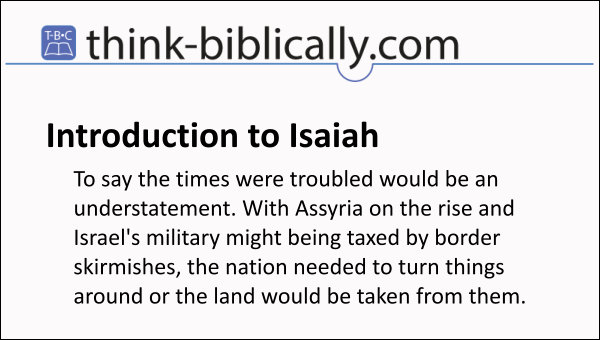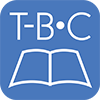By Tyson Thorne

Israel, 740 BC — King Uzziah is dead, long live king Jotham. As the prophet began his new carrier the kingdom was divided, but both Judah and Israel existed. To say the times were troubled would be an understatement, with Assyria on the rise and Israel's military might being taxed and depleted by border skirmishes, if the nation didn't turn things around the land would be taken from them. It was a busy time in history, but especially for Isaiah, who not only began a new career but was involved in burying his cousin, King Uzziah, as well.
Although he lived in Jerusalem and served as the court preacher, Isaiah gave woes and warnings to both kingdoms. He was married with at least two sons (Is. 8.18). His primary (and most urgent) ministry was to the Northern Kingdom, because their time was short. In fact, that kingdom would be taken into captivity by Assyria during Isaiah's ministry. It was a time of great unrest throughout the Near and Middle East.
Author and Date of Writing
Bible students will be familiar with the modern theory of three Isaiah's. Modern, i.e. liberal, theologians claim the book of Isaiah was written by at least three authors — Isaiah, Deutero-Isaiah and Trito-Isaiah — and possibly more. There is the original author who, they say, actually wrote very little of the book that bears his name. Then there is the second, written during the Babylonian exile, and finally the third that lived and wrote during post-exilic times. There are even more complex theories of the books authorship out there, but none are worth the time to read since there is plenty of reason to hold to the traditional view that Isaiah — the real Isaiah — wrote the entire book.
The best commentary on the Bible is other Bible passages. Matthew (12.17-21), John (12.38-41) and Paul (Romans 10.16-21) all attest to the prophet, son of Amoz, as the author. Since Scripture is the inspired word of God, it would hardly be wrong about who it attests authorship to. For a scholarly refutation of the the Three Isaiah's theory see Merril F. Unger's excellent Introductory Guide to the Old Testament (Grand Rapids, Zondervan, 1956) pages 315-322. Assuming these facts, the book would have been written circa 700 BC.
Structure of the Book
i. Prophecies of Punishment, chapters 1-35
ii. Transition of Power and Threat from Assyria to Babylon, chapters 36-39
iii. Prophecies of Peace, chapters 40-66
.
